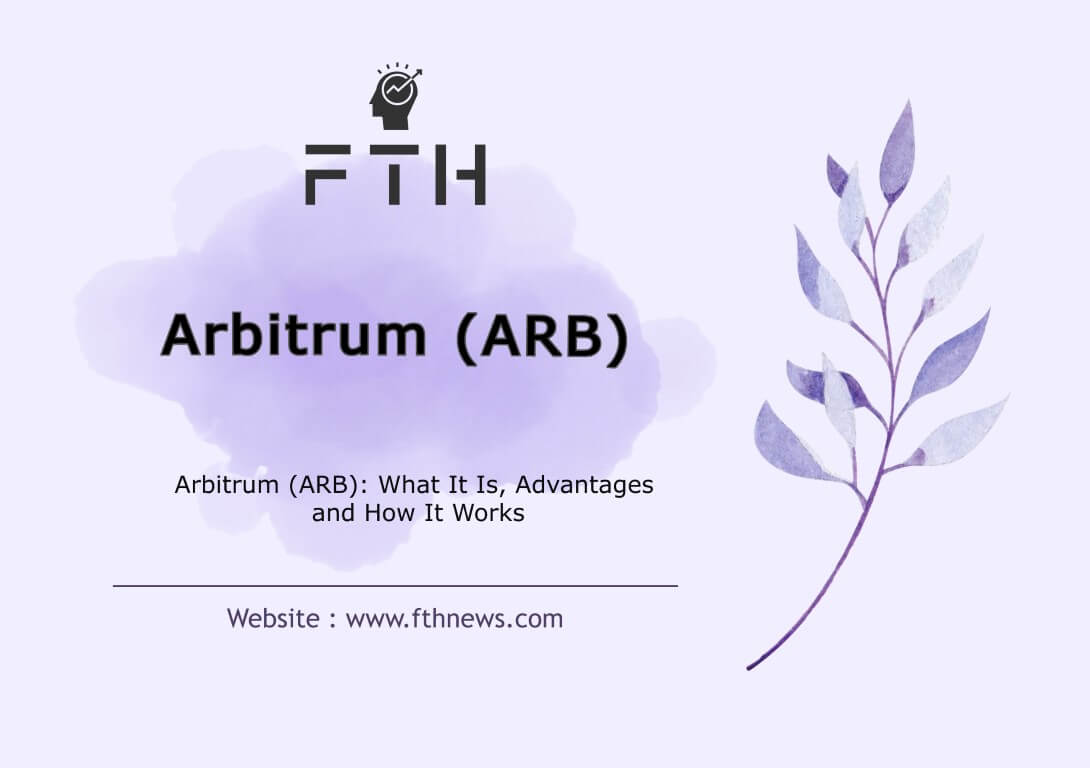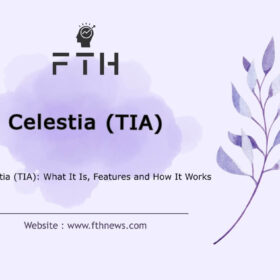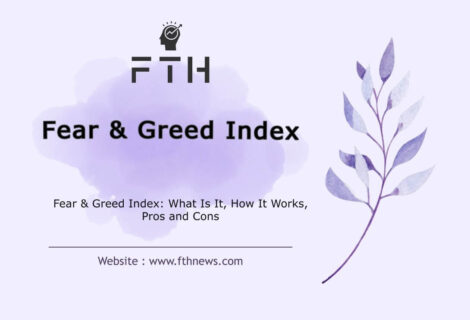
Arbitrum (ARB): What It Is, Advantages and How It Works
Arbitrum (ARB) stands out as Ethereum’s second-layer solution, boasting unparalleled success in enhancing scalability, reducing transaction costs, and fortifying security.
For crypto professionals navigating the volatile market, the Arbitrum network emerges as the beacon of hope. Ethereum’s widespread use for developing decentralized applications (dApps) has propelled its popularity, but the ensuing network congestion and escalating gas fees have become substantial pain points.
In response to these challenges, the Ethereum network urgently requires scalability optimization. Enter Arbitrum, a platform positioned as the remedy to Ethereum’s predicaments. But what exactly is the Arbitrum network, and how does it tackle Ethereum’s scalability issues?
What is the Arbitrum (ARB) Network?
The Arbitrum network operates as Ethereum’s layer two solution, strategically designed to augment the capabilities of Ethereum blockchain contracts. Ethereum’s rising transaction fees and resultant halting of continuous blockchain development find resolution with Arbitrum technology. This advancement addresses the issues of burgeoning transactions and their associated high costs on the Ethereum network.
Ethereum transactions hinge on smart contracts, with transaction fees acting as incentives for those hosting these contracts. As user numbers surge, so do transactions, leading to increased fees. Miners must meticulously execute all smart contract implementation steps, causing a scalability bottleneck and driving up transaction costs. Notably, smart contract code and data are publicly disclosed on the Ethereum network unless a contract features privacy coverage.
Arbitrum’s primary objective is to alleviate congestion and reduce costs on the Ethereum main network by transferring a significant volume of users, data, and transactions to the ARB network, or layer two.
Main Features of the Arbitrum (ARB) Network
For secure and efficient digital currency trading, the Arbitrum network is equipped with essential features:
- Security Mechanism: ARB employs the same security mechanism as Ethereum.
- Enhanced Speed: It surpasses Ethereum in transaction speed.
- Scalability: ARB offers superior scalability compared to Ethereum.
- Privacy Features: The network incorporates privacy-enhancing features.
- Cost Efficiency: ARB eliminates the high costs associated with Ethereum.
Arbitrum Token (ARB)
As a pivotal aspect of Ethereum’s layer two scaling solutions, the ARB token serves as the governance token for the Arbitrum network. Since its launch, the ARB token has gained recognition and popularity, being actively traded on major cryptocurrency exchanges.
Developers initiated the project with the ARB token, and it now enjoys listings on prominent exchanges like Bitpin. The total supply of the ARB token is capped at ten billion units.
Arbitrum Network Architecture
The Arbitrum ecosystem boasts a streamlined architecture, comprising components dedicated to specific functions. Key roles in the ARB structure include:
- Verifier: A global entity or distributed protocol verifying and publishing transactions.
- Key: A protocol member capable of owning assets and proposing transactions.
- Virtual Machine (VM): A virtual participant with the code and data defining the VM’s operation.
- Manager: Responsible for overseeing VM progress and ensuring optimal performance.
Understanding these roles provides insight into the seamless functionality of the Arbitrum network, positioning it as a comprehensive solution to Ethereum’s scalability challenges.
How Does Arbitrum Work?
The Arbitrum ecosystem operates on the fundamental principles of digital currency, allowing each user to implement smart contracts as virtual machines. These virtual machines encode the rules of smart contracts, essentially serving as programs running on the ARB Virtual Machine (AVM).
Designers of virtual machines can select a set of administrators for each machine. Using Arbitrum’s layer two protocol, administrators can enforce the execution of virtual machines according to their code. Stakeholders in the outcome of the virtual machine can act as administrators or delegate this responsibility to trusted individuals.
In ARB, managers facilitate the advancement of the virtual machine state, reducing the burden on validators. Instead of requiring validators to reexecute the virtual machine, they only need to track the hash of the state, resulting in lower costs. Arbitrum incentivizes managers to reach consensus on virtual machine performance.
Validators accept any status change supported by all administrators. Disagreements between administrators trigger a two-part technique where validators minimize disagreement and reach a single instruction. Managers provide simple proofs for these instructions. Virtual machines and parties have the capability to send currency and messages to each other. The dispute resolution protocol initiates when one manager raises an issue, and another manager challenges it.
When a decentralized application (DApp) runs on the Arbitrum blockchain, users can select a group of validators for the consensus process. Unlike Ethereum’s layer one network, ARB validators operate independently, reducing connections between nodes and enhancing transaction processing speed.
What Makes Arbitrum Network Unique?
While Arbitrum is not the first project aiming to address Ethereum’s challenges, its unique capabilities set it apart:
- Compatibility with Ethereum Virtual Machine (EVM): Arbitrum’s compatibility with the Ethereum Virtual Machine simplifies development, eliminating the need for a new language.
- Strong Development Team: The Arbitrum development team actively addresses network weaknesses, minimizing barriers to entry into this second layer.
- Cost Efficiency: Arbitrum not only increases transaction volume on the Ethereum platform but also reduces costs.
These features collectively position Arbitrum as a crucial player in the realm of digital currency transactions.
History of the Arbitrum Network
On August 31, 2021, Offchain Labs, the developer of the Arbitrum network, officially launched the Arbitrum One main network. Simultaneously, Offchain Labs announced a successful Series B funding round, securing approximately $120 million led by Lightspeed Venture Partners. This funding propelled Offchain Labs’ valuation to $1.2 billion. Noteworthy investors include Coinbase Ventures, Pantera, Compand, and BlockNation. This significant financial backing underscores the confidence in the potential and importance of the Arbitrum network.
Difference Between Arbitrum and Other Roll-ups
Arbitrum Rollup distinguishes itself from other roll-ups primarily through its data efficiency. Unlike other roll-ups, the ARB Rollup chain holds less data. Notably, it supports EVM smart contracts and is compatible with all Ethereum developer tools, making it a seamless transition for developers. This layer two chain offers unparalleled scalability while ensuring security through the Ethereum network. All transaction data is recorded on Ethereum, further leveraging its security.
From a user and developer standpoint, interaction with ARB mirrors the Ethereum experience. Supporting an Ethereum-like RPC interface allows for development in all EVM-compatible languages and native utilization of Ethereum tools, without the need for special adapters. The significant deviation lies in transaction costs—Arbitrum transactions are substantially cheaper than those on Ethereum.
The process of transferring contracts from Ethereum to ARB is swift and straightforward, requiring no code changes or new software downloads. Although custom software isn’t mandatory for contract deployment and interaction with the ARB Rollup chain, some users may choose to verify the chain independently.
Arbitrum Rollup ensures security by allowing any honest user to vouch for the system’s correct operation. Validation is entirely permissionless, requiring the download of the Arbitrum Validator node software and connecting to the chain. Issuing or disputing a claim involves temporarily staking shares, which are returned upon claim resolution.
In essence, the ARB network empowers users to interact with, deploy, and use familiar tools, maintaining decentralization and security while executing smart contracts at a significantly lower cost than Ethereum.
Why Arbitrum Represents a Significant Change
Arbitrum’s revolutionary aspect lies in its optimization of the dispute resolution process through optimistic rollups. This optimization has the potential to reduce Ethereum network congestion, making Arbitrum a formidable second-layer solution. High compatibility with EVM, robust development tools, and cost-effectiveness contribute to making ARB a sophisticated, efficient, and impactful network.
Platforms Supporting Arbitrum
Arbitrum One, Offchain Labs’ flagship layer two chain, was released to developers of decentralized applications on May 28th. Over 250 development teams have gained access to ARB, showcasing its broad developer adoption. UniSwap, a major decentralized exchange on Ethereum, has explored the possibility of transferring to ARB One, with a significant portion of its governance token holders expressing support. Other platforms supporting ARB include SushiSwap, Anyswap, Curve Finance, and Abracadabra.
Arbitrum vs. Optimism: A Comparison
While both ARB and Optimism fall under optimistic rollups, they differ in fundamental aspects. The dispute resolution process sets them apart—the ARB Rollup employs a more advanced multi-round fraud proof mechanism, implemented off-chain, compared to Optimism’s one-round proof mechanism on layer one. Additionally, Arbitrum runs its own ARB Virtual Machine (AVM), enabling compatibility with all EVM compiled languages, whereas Optimism relies on Ethereum’s EVM, making it essentially a Solidity compiler. Arbitrum’s multi-period fraud proof is deemed more cost-effective and efficient than Optimism’s one-period proof.
Arbitrum Roadmap
As of now, Arbitrum’s official website does not provide a detailed roadmap. However, recent developments indicate progress in the project. The latest milestone is the launch of the Stylus testnet, as discussed in the network services section. Future steps in the roadmap include the audit of Stylus source code and its activation on the main chains of Arbitrum, namely Arbitrum One and Arbitrum Nova. Additionally, there are plans for proposing Dao ARB activation on ARB testnets and subsequently on the main network.
Development Team of Arbitrum Network
The Arbitrum Layer 2 solution is developed by Offchain Labs. The company was founded by three professors and doctoral students of computer science at Princeton University, with academic research forming the basis of ARB. Key members of the development team include:
- Ed Felten (Co-founder and Chief Scientist): A former Princeton University professor and technology deputy in the US government. He is also a member of the National Engineering Foundation of the United States.
- Steven Goldfeder (CEO): Holds a Ph.D. in computer science from Princeton, specializing in cryptography and digital currencies.
- Harry Kalodner (CTO): Formerly involved in economics, anonymity, and cryptocurrencies before pursuing a Ph.D. at Princeton.
Investors and Arbitrum Partnerships
Offchain Labs, the founder of ARB, has attracted $123.7 million in capital, as reported on Crunchbase. Notable fundraising rounds include $3.7 million on April 3, 2019, $20 million on April 1, 2021, and a significant $100 million on August 31, 2021, with Lightspeed Venture Partners as the main investor.
ARB has established partnerships with various projects and entities, contributing to its ecosystem’s growth. Some notable collaborations include:
- Chain Link: This partnership focuses on automating Chain Link on Arbitrum’s layer two, streamlining smart contract functions for web developers in a decentralized manner.
- Alchemy: Collaborating with Alchemy facilitates the integration of fiat currencies into the ARB ecosystem. Alchemy Pay’s payment solution connects clients of fiat currencies with cryptocurrencies on Arbitrum’s second-layer chain.
- OpenC: The partnership with OpenC enhances the growth and development of NFTs created on ARB.
- UniSwap, Circle, Metamask, Reddit, Graph: These renowned names contribute to Arbitrum’s success and development by supporting its ecosystem.
Additionally, ARB Foundation has initiated collaboration with Fracton Ventures to promote the ecosystem’s acceptance among the Japanese audience.
While these partnerships demonstrate a diverse range of collaborations, ARB continues to explore new avenues for expansion and development.
Please note that developments and partnerships may evolve, and it’s advisable to refer to official sources for the latest information.
Token Distribution Breakdown
The distribution of tokens for the ARB ecosystem is as follows:
- Investors: 17.53%
- This portion is allocated to the individuals or entities that invested in the project, indicating a share of the total token supply.
- Dao in the Arbitrum Ecosystem: 1.13%
- Designated for the decentralized autonomous organization (Dao) within the Arbitrum ecosystem. This allocation likely represents governance tokens held by the Dao for decision-making within the ecosystem.
- Users’ Personal Wallets: 11.62%
- Allocated to users, indicating that a portion of the tokens is distributed directly to individual wallet addresses, possibly as incentives or rewards for participating in the ecosystem.
- Dao Treasury: 42.78%
- The majority of tokens, 42.78%, is allocated to the treasury of the decentralized autonomous organization within the Arbitrum ecosystem. This treasury may be utilized for various purposes, including governance proposals, ecosystem development, and other community initiatives.
- Team and Consultants: 26.94%
- A significant portion, 26.94%, is allocated to the team and consultants involved in the development and growth of the Arbitrum ecosystem. This allocation is often used to reward and incentivize the core contributors and advisors.
It’s important to note that token distribution percentages can vary among blockchain projects, and the specific details may be outlined in the project’s whitepaper, official documentation, or announcements. Token allocations play a crucial role in aligning incentives, fostering community participation, and ensuring sustainable ecosystem development.
FAQ
Arbitrum is a layer two scaling solution for Ethereum, enhancing its scalability and reducing transaction costs.
Arbitrum itself is not a coin; it’s a layer two solution. ARB is its governance token. As for investment, consider researching market trends and consulting financial advice
Arbitrum facilitates faster and cheaper transactions on the Ethereum network, supporting decentralized applications and smart contracts.
Yes, Arbitrum utilizes Ethereum’s security and has implemented measures to ensure the safety of its layer two transactions.
Arbitrum is considered valuable for its compatibility with Ethereum, low transaction costs, and efficient scalability solutions, making it a preferred layer two option.














